Heidi M. Szpek, Ph.D. Emerita Professor, Scholar, Translator, NGO Board Member
Those who have visited or read about Bagnowka Jewish Cemetery in Bialystok, present-day Poland, are aware of an ohel (mausoleum) for Chief Rabbi Chaim Hertz Halpern (d. 1921), erected by the Bialystoker Center of New York in 1922. It stands near center on this cemetery, just a gentle ascent of 150 feet from the cemetery’s main southern entrance on Ul. Wschodnia. But there was once another ohel on this cemetery – as I’ve written before, erected almost 25 years earlier. This earlier ohel was for Chief Rabbi Shmuel Mohilewer (d. 1898) and located just one section north of Halpern’s. The location of this earlier ohel makes sense when we remember that another entrance once existed just west on this cemetery’s border on the former Ul. Cmentarna. These two ohalim and many surrounding tombstones for Bialystok’s rabbis suggest that this area of the cemetery was dedicated to Bialystok’s rabbis and scholars.
Just recently, I explored visual restoration of both ohalim through the medium of watercolor. The Halpern ohel, partially restored, is still in need of a door, three windows, a roof painting or resurfacing, topped with a small wrought iron Star of David. A new commemorative plaque was already installed in 2013.
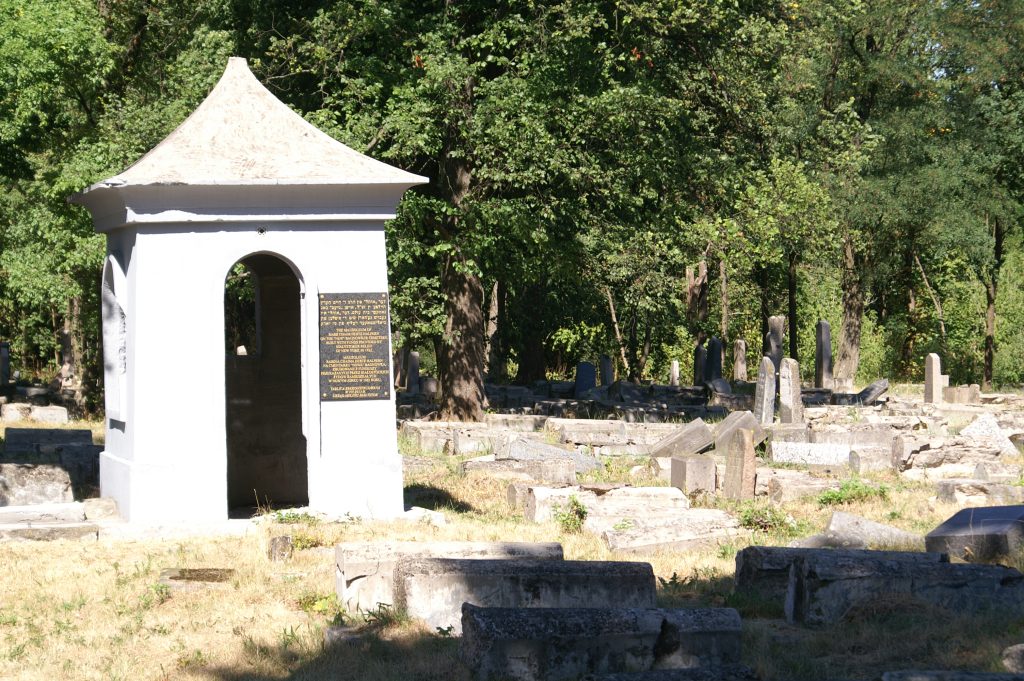
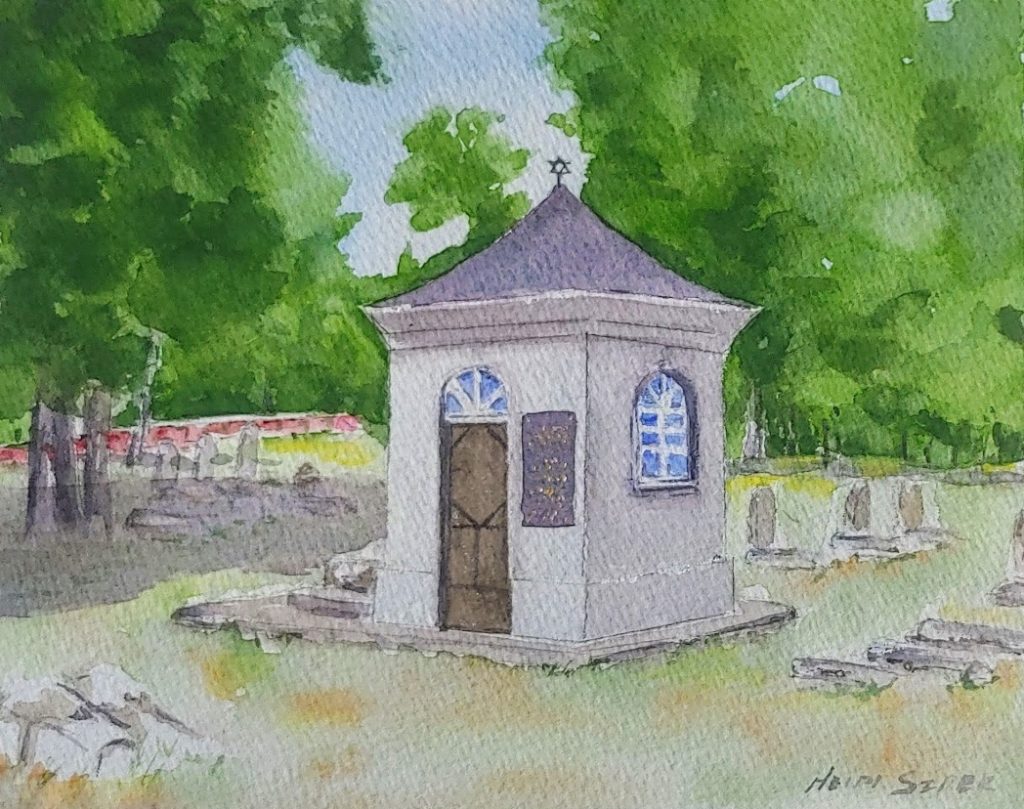
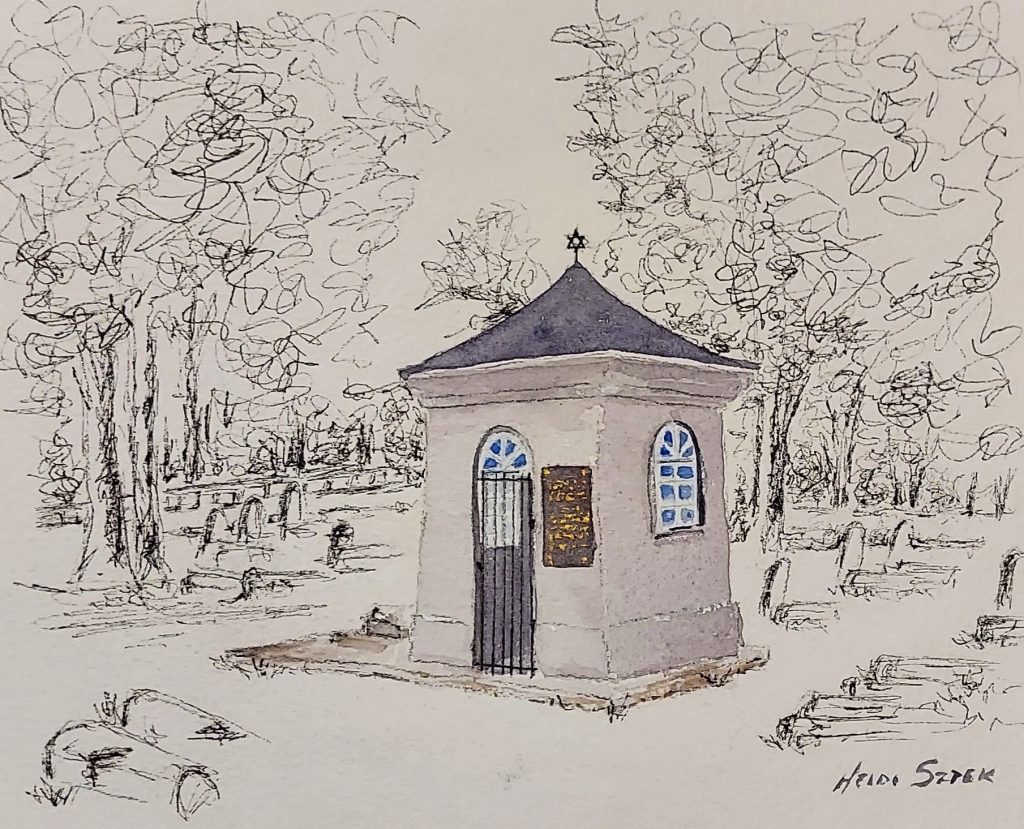
As for the Mohilewer ohel, only the perimeter of its former foundation remains. In 1991, given the sorry state of Bagnowka cemetery, Mohilewer’s followers from Petah Tikva, Israel, a community established by the rabbi, exhumed his remains. They were reinterred in Mazkeret-Batya Cemetery in Israel where a tombstone now stands in remembrance. Mohilewer’s dilapidated Beth Midrash still stands in Bialystok, on Ul. Warszawa, just opposite the entrance to Branicki’s palace; its exterior holds a worn historical marker. Nothing, however, remembers Rabbi Mohilewer on Bagnowka. Yet, Mohilewer founded this cemetery, served as Bialystok’s Chief Rabbi until his death in 1898, and was among the founders of Religious Zionism. What is suggested through my visual restoration is a symbolic ohel, inspired in design by the ohel of Rabbi Halpern. An informational plaque would be needed, too.
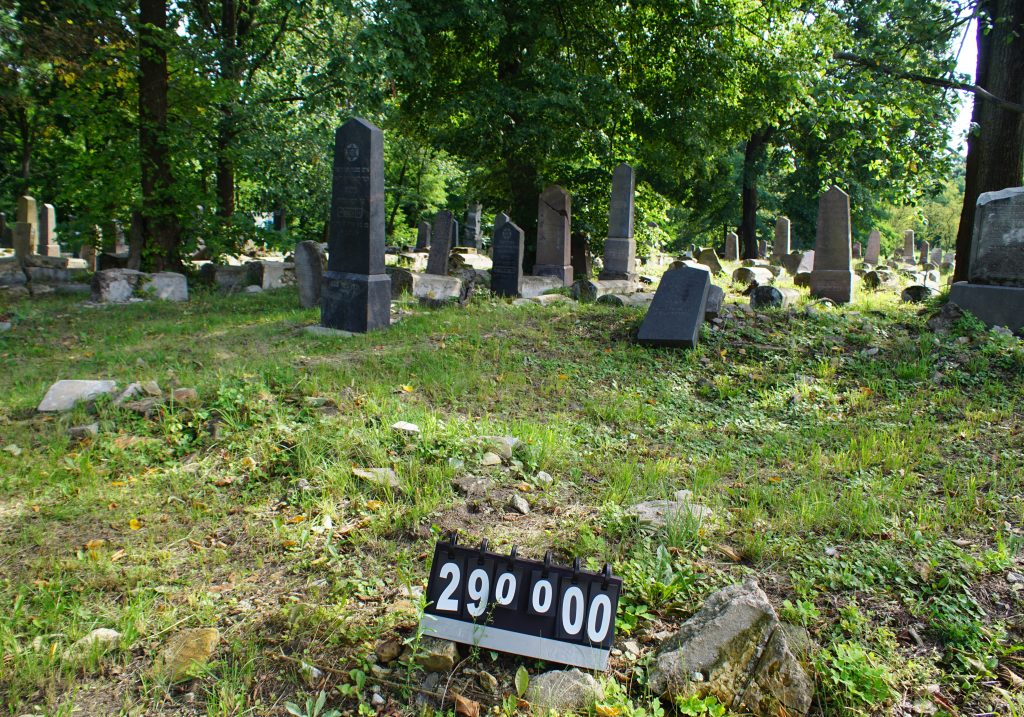
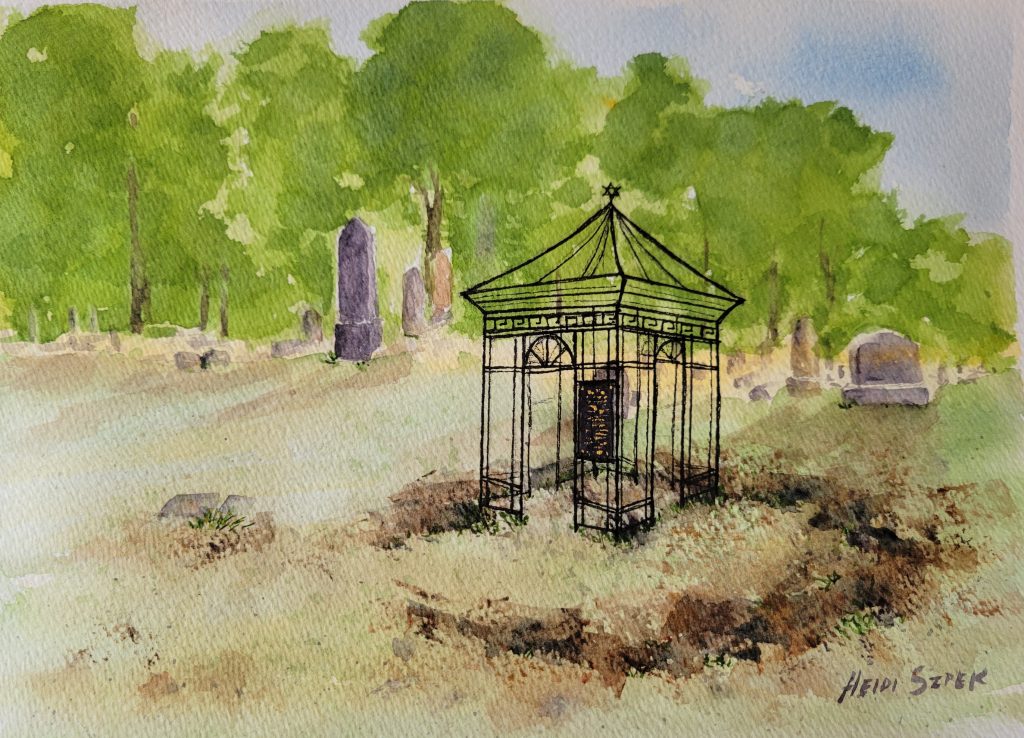
Yet something is still lacking in these restorations, perhaps the most critical component of remembrance – their epitaphs! Fortunately, history has preserved them elsewhere. The foremost historian of Jewish Bialystok, Avraham Shmuel Herszberg records them in his Pinkos Bialystok (Chronicle of Bialystok). These epitaphs could be engraved on symbolic matzevoth, Rabbi Mohilewer’s within his symbolic ohel; Rabbi Halpern’s set within the existing ohel. Interestingly, R. Mohilewer’s epitaph cover both facades of his matzevah – the front with more traditional language, the obverso with historical details. R. Halpern inscription is replete with flowery epithets and exquisite language for the rabbi, described as the dew (which) gives life to hard days and to humbled soul(s).
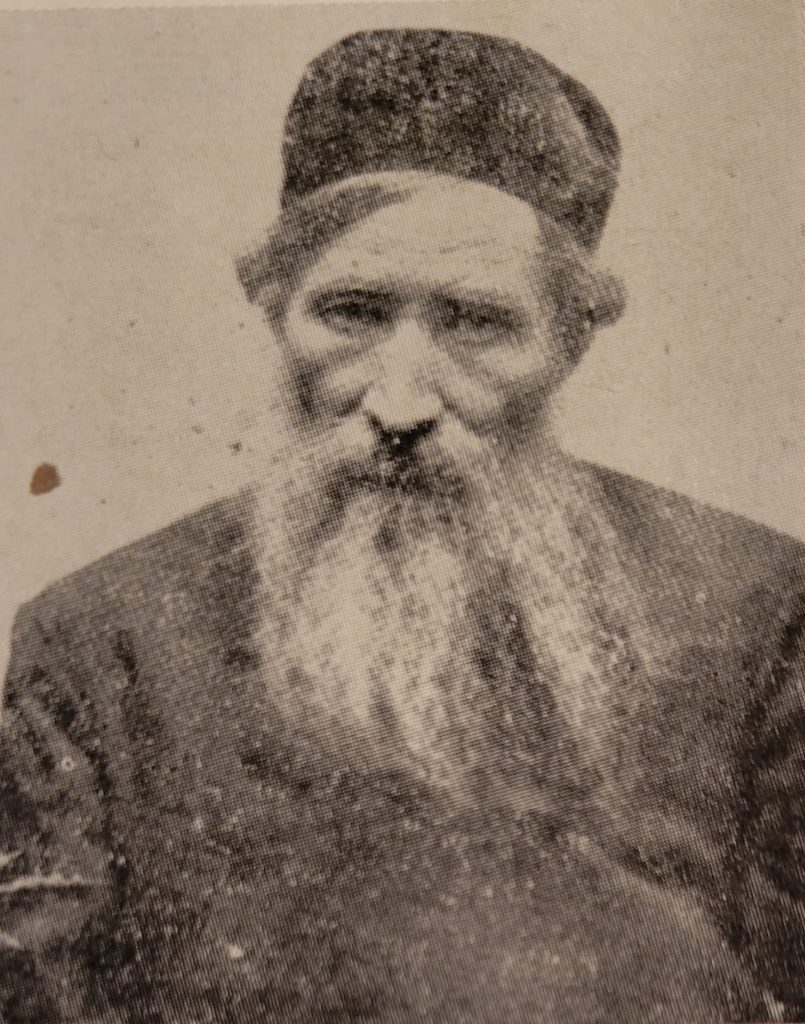
(On the back side of his matzevah) Rabinu Shmuel Mohilewer, son of the rabbi and wise one, Yehuda Lejb, a tsaddik of blessed memory. He served in the leadership for five years in the congregations of Głębokie, Sakaj, Suwalki, Radom and Bialystok (since 5643 = c. 1883). He was born in Głębokie, district of Vilna, 27 Nisan 5584 (c. 1824). He died in Bialystok 19 Sivan 5658 (c. 1898). (Photo credit: David Sohn, Bialystok Photo Album)
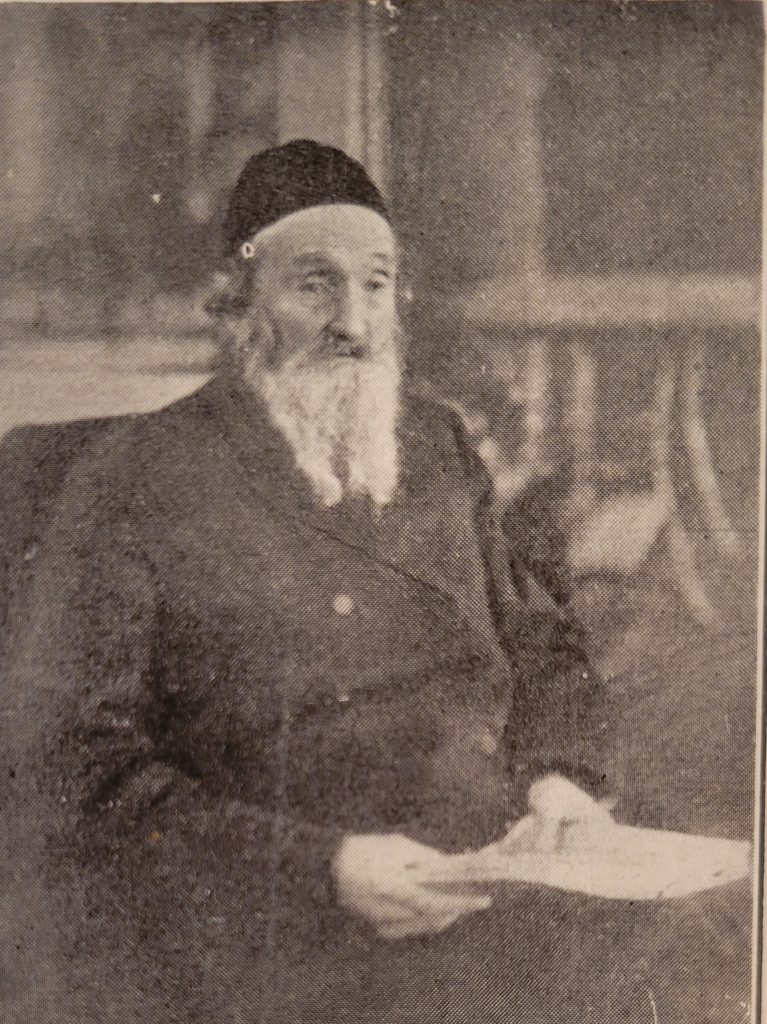
Our Master, Chaim Hertz Halpern, a tsaddik of blessed memory, first head of the Beth Din of his congregation, son of the gaon, the righteous is the everlasting foundation, Our Master, Raphael Yom Tov Lipman, a tsaddik of blessed memory, father of the Beth Din of Bialystok. He was born 8 Shevat 5601 [18 January 1841]. He died 6 Iyar 5679 [7 January 1919] as the abbreviated era .תנצבה (Photo credit: David Sohn, Bialystok Photo Album)
Herszberg also records that, “In the year of the 50th Anniversary of the founding of Hibat Zion (5642-5692) 11 Tevet 5692 (= 21 December 1931), a large celebration was organized with eulogies in Beit Midrash Beit Shmuel with a procession to his tombstone at the cemetery. There was attached to his tombstone a marble stone tablet with 20 verses of Hebrew poetry about Rabbi Shmuel Mohilewer.” At present, no further information exists regarding the fate of this stone tablet or what poetic words remembered R. Mohilewer.
*******
There is always another source of information or inspiration. In this case, the pinkos (record book) for Bialystok is the source for these two rabbinic epitaphs. While every pinkos is unique in its contents of remembrance, Herszberg’s two volumes are replete with epitaphs for rabbis, their wives and other key figures in Bialystok’s history. Some epitaphs are from the Old Rabbinic Cemetery, others from Bagnowka. Today, many exist only in these pages. As for the historian Avraham Shmuel Herszberg, who attended the dedication of Bagnowka Cemetery along with Rabbi Mohilewer and left us these historical gems and much more – he perished in February 1943, days before the first Aktion in the Bialystok Ghetto. Nowhere in Bialystok are he or his contributions to Jewish Bialystok’s history remembered. But creating his remembrance … that is a story for another day.
© Heidi M. Szpek, June 2022